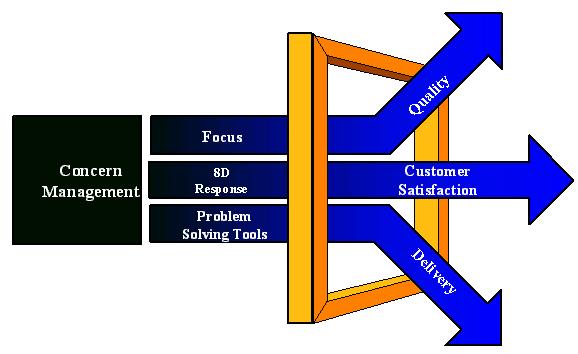Customer satisfaction is generally determined by the suppliers performance in three measurable activities; Quality, Cost and Delivery. Concern management is a process geared towards improving a company's focus and performance in two of these areas; Quality and Delivery.  Concern management is a structured approach to dealing with internally and externally raised concerns or problems. By using the 8D approach to problem resolution, the system provides responses, and results, in a format which is accepted as an industry standard. Concerns handled in this manner will be resolved quickly and completely, with the supporting evidence to show complete closure. All of which generates customer confidence that problems are not recurring and the supplier has improved the controls for its processes. This is an important factor in any company's survival, because with no customers there is no company.
Concern management is a process which receives problems or concerns, allocates them to the area defined as responsible, and provides a method of tracking through the problem solving stages to resolution. Concern management does not solve problems, but provides a mechanism to ensure that problems are solved. The basic steps are as follows;
The process outlined above should be generic enough to be used in any organisation. The details of the process, and the forms used may differ between organisations. In this course, we will provide examples based on the paperwork used in the GKN concern management process. |